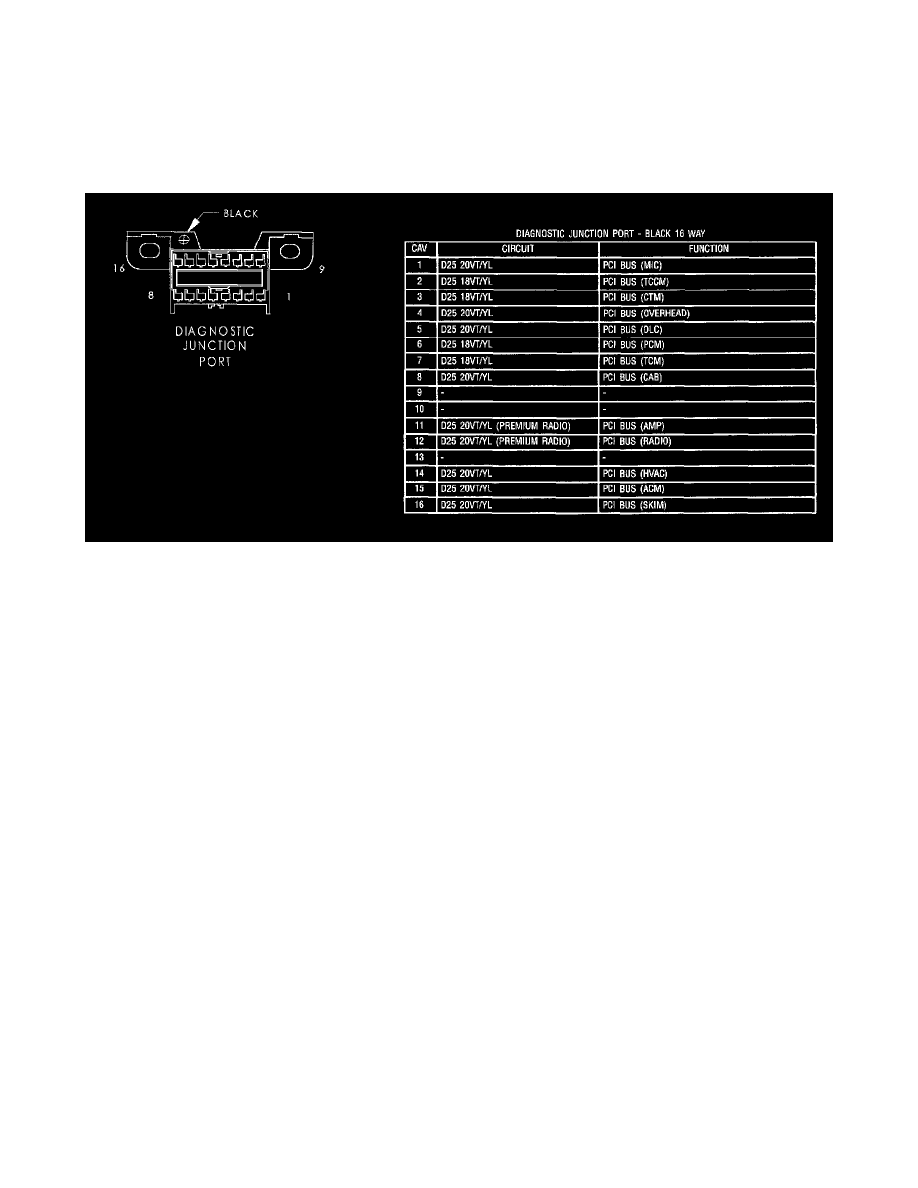Durango 2WD V8-4.7L VIN N (2001)

Information Bus: Description and Operation
PROGRAMMABLE COMMUNICATION INTERFACE (PCI)
The Programmable Communication Interface (PCI) data bus system is a single wire multiplexed network used for vehicle communications.
Multiplexing is a system that enables the transmission of binary encoded messages over a single channel or circuit between multiple modules. All
DaimlerChrysler vehicles use this principle for communication between various microprocessor-based electronic control modules. The PCI bus
circuit is identified as D25 and is yellow with a violet tracer, or violet with a yellow tracer, depending upon the application. Additional tracer
colors may be added to the violet in order to distinguish between different module connections. The modules are wired in parallel. Connections are
made in the harness using splices.
Diagnostic Junction Port
One splice, called the Diagnostic Junction Port, serves as the "Hub" of the bus. The Diagnostic Junction Port provides an access point to isolate
most of the modules on the bus in order to assist in diagnosing the circuit.
The following modules are used on the DN:
-
Airbag Control Module
-
A/C Heater Control
-
Central Timer Module
-
Controller Antilock Brake
-
Compass Mini-Trip Computer
-
Electro/Mechanical Instrument Cluster
-
Powertrain Control Module
-
Radio
-
Sentry Key Immobilizer Module
-
Transfer Case Control Module
-
Transmission Control Module
The PCI data bus exceeds the Society of Automotive Engineers (SAE) J1850 Standard for Class B Multiplexing.
Many of the electronic control modules in a vehicle require information from the same sensing device. In the past, if information from one sensing
device was required by several controllers, a wire from each controller needed to be connected in parallel to that sensor. In addition, each
controller utilizing analog sensors required an Analog/Digital (A/D) converter in order to "read" these sensor inputs. Multiplexing reduces wire
harness complexity, sensor current loads and controller hardware because each sensing device is connected to only one controller, which reads and
distributes the sensor information to the other controllers over the data bus. Also, because each controller on the data bus can access the controller
sensor inputs to every other controller on the data bus, more function and feature capabilities are possible.
In addition to reducing wire harness complexity, component sensor current loads and controller hardware, multiplexing offers a diagnostic
advantage. A multiplex system allows the information flowing between controllers to be monitored using a diagnostic scan tool. The
DaimlerChrysler system allows an electronic control module to broadcast message data out onto the bus where all other electronic control modules
can "hear" the messages that are being sent. When a module hears a message on the data bus that it requires, it relays that message to its
micro-processor. Each module ignores the messages on the data bus that are being sent to other electronic control modules.
